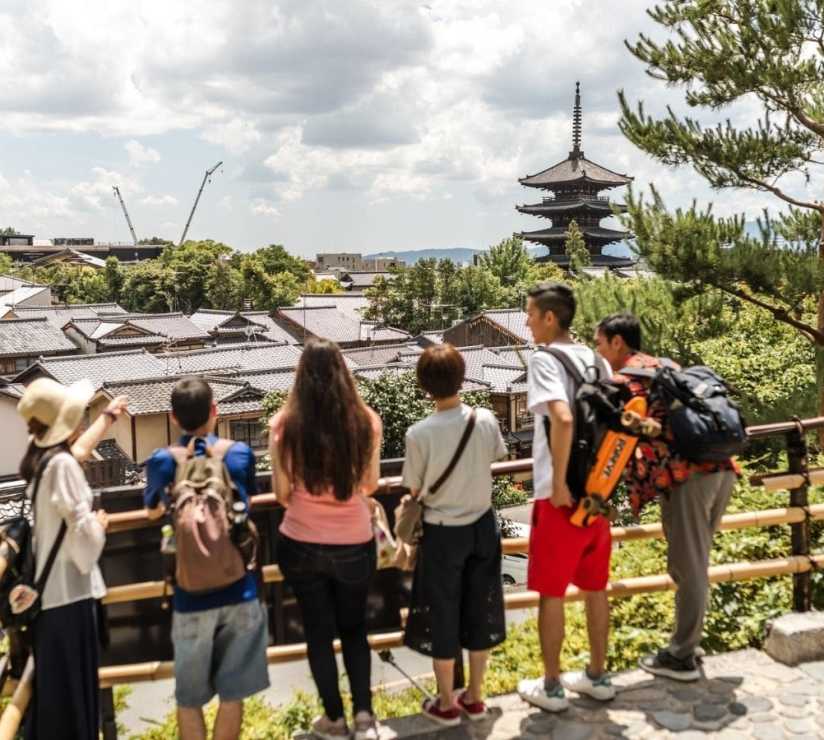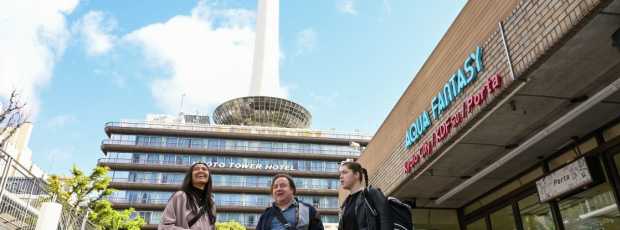Table Of Contents
- Understanding Kyoto's Rhythm
- Sacred Spaces That Still Breathe
- The Art of Wandering: Districts and Neighborhoods
- Arashiyama: Where Nature and Culture Meet
- Seasons and Ceremonies: When Timing Matters
- Markets and Museums: Culture in Daily Life
- Imperial Kyoto: Power and Beauty
- Hidden Gems: The Places Locals Treasure
- Planning Your Journey: A Local's Perspective
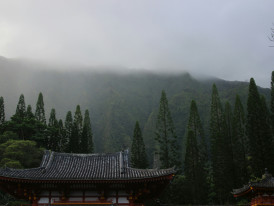
Morning mist rising from traditional wooden buildings in Kyoto Photo by Mir Ali on Unsplash
Kyoto holds layers. The surface layer draws millions, and rightfully so. But underneath runs something quieter, more personal, private tours get you close, but this is the kind of magic you feel in your soul. These are the places and moments that shape daily life here, the ones that reveal why this city has remained Japan's cultural heart for over a thousand years.

Seasonal flowers arranged in a traditional Japanese vase Photo by Abhishek Sharma on Unsplash
Understanding Kyoto's Rhythm
Before diving into specific locations, understanding Kyoto's natural rhythm enhances any visit. This city breathes with the seasons more consciously than most places I know. Cherry blossom season arrives with predictable excitement, but the weeks leading up to it hold their own quiet beauty. Late November brings autumn colors that seem painted onto temple grounds and mountain slopes.
The Kamo River serves as the city's spine, connecting districts and providing a constant reference point. From Kyoto Station in the south to the mountains in the north, the river carries both water and stories. I've walked its banks thousands of times, in all seasons, and it never looks quite the same twice.
Downtown Kyoto pulses with modern energy, while central Kyoto preserves older rhythms. The contrast isn't jarring, it flows naturally, like conversations between generations.

Ancient wooden temple stairs disappearing into forest Photo by Luba Ertel on Unsplash
Sacred Spaces That Still Breathe
The Golden Pavilion Beyond the Postcard
Kinkaku ji draws crowds for obvious reasons. The Golden Pavilion catches light like nothing else in Japan. But timing transforms the experience entirely. I visit just after opening, when frost still clings to garden stones and the building's reflection appears undisturbed in the pond. Kyoto walking tours might miss this magical timing that transforms the experience entirely.
The temple's formal name, Kinkaku ji temple, honors its history as a retirement villa before becoming a place of worship. Standing there early, before tour groups arrive, you understand why someone chose this spot for contemplation.
Silver Pavilion's Subtle Wisdom
Ginkaku ji, the Silver Pavilion, teaches different lessons. Its gardens demonstrate restraint, every stone, every plant placed with intention but without showiness. The garden views from the temple's upper levels reveal Kyoto spreading toward distant mountains.
I often bring friends here who think they prefer dramatic sights. By the end of our visit, they're photographing shadows and textures instead of buildings.
Temples That Time Forgot
Kurama dera temple requires effort to reach, which keeps it peaceful. The trail up the mountain passes smaller shrines and offers glimpses of Kyoto below. Kurama dera itself sits among towering trees that make the buildings feel appropriately humble.
Kifune shrine nearby makes an excellent pairing. The red torii gates leading up to it create natural frames for photography, but more importantly, they mark a transition into sacred space that feels genuine rather than performed.
Kodai ji in southern Higashiyama offers something different, intimate gardens that change completely between day and night visits. The temple's evening illuminations reveal details invisible during daylight hours.
Looking for a private city experience in Kyoto?
Explore the city with a local who plans a private day just for you; no groups, no scripts.

A geisha walking quickly through a narrow Gion alley at dusk Photo by masahiro miyagi on Unsplash
The Art of Wandering: Districts and Neighborhoods
Southern Higashiyama's Living History
Southern Higashiyama preserves what old Kyoto felt like. The district's traditional streets climb hillsides lined with wooden buildings that house everything from ancient temples to contemporary craft shops, creating a living timeline where past and present exist side by side. Kiyomizu dera temple anchors the area, but the approach to it through narrow stone-paved lanes matters as much as the destination itself. Each step upward reveals new details, traditional shop signs, glimpses into courtyards, the gradual transition from commercial bustle to sacred quiet.
Kiyomizu dera itself offers spectacular views over the city, particularly as the temple's wooden stage extends over the hillside like a platform suspended between earth and sky. From this vantage point, the entire city spreads below, a patchwork of traditional rooftiles and modern buildings that somehow harmonize rather than clash.
Geisha Districts: Where Tradition Works
Geisha districts like Gion remain working neighborhoods, not museums. Apprentice geisha, called maiko, still train here, their wooden sandals clicking against stone paths as they hurry between lessons and appointments.
Gion shijo station provides easy access, but walking from there reveals how the district transitions from modern to traditional within just a few blocks. Evening brings the best atmosphere, when paper lanterns glow and the sound of shamisen music drifts from closed doors.
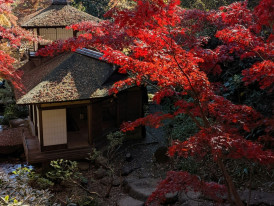
Small temple building nestled among autumn-colored trees Photo by Kenji Kitabayashi on Unsplash
Arashiyama: Where Nature and Culture Meet
The Famous Bamboo Grove and Beyond
Arashiyama's bamboo forest creates an otherworldly experience. The bamboo grove filters light into green-tinted columns, and wind through the stalks produces sounds unlike anything else in nature. Saga Arashiyama station provides direct access, making this one of Kyoto's most visited natural sites. A great combination is to view the bamboo forest and the Arashiyama Monkey Park Iwatayama on the same day.
Tenryu ji temple sits at the bamboo grove's edge, its gardens designed to incorporate distant mountains into their composition. The temple demonstrates how traditional Japanese garden design borrows scenery from beyond its boundaries.
Okochi sanso villa crowns the hill above the bamboo grove. The climb takes effort, but the villa's gardens offer some of Kyoto's finest mountain and river views. Few visitors make the ascent, leaving this beautiful gardens relatively peaceful.
Hidden Temples in Mountain Folds
Several smaller temples dot Arashiyama's mountains, accessible only by hiking trails. These stunning temples see few visitors but offer profound quiet and exceptional autumn colors when maples turn.
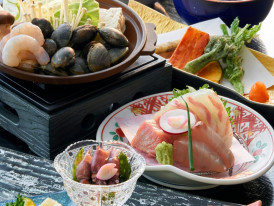
Beautifully arranged kaiseki meal with seasonal decorations Photo by Buddy AN on Unsplash
Seasons and Ceremonies: When Timing Matters
Cherry Blossom Season's Hidden Rhythms
Cherry blossoms transform Kyoto, but the season extends beyond peak bloom. Early April often provides the most photogenic moments, when fallen petals create pink carpets under trees. Maruyama Park hosts some of the city's most spirited hanami parties, where families and friends gather for outdoor celebrations.
The Kamo River banks during cherry blossom season become temporary outdoor dining rooms, with restaurants setting up special terraces called kawadoko. These platforms, suspended over the water, offer dining experiences available nowhere else.
Autumn's Quiet Transformation
Autumn colors arrive gradually, starting in the mountains and flowing downward into the city. Late November typically provides peak color, but the weeks leading up to it offer subtler beauty as different tree species turn at different rates.
Tea Ceremony: Understanding Through Participation
Tea ceremony represents more than drinking green tea, it embodies an entire philosophy of hospitality and mindfulness. Several locations in Kyoto offer authentic experiences where visitors can participate rather than simply observe.
The ceremony's movements, developed over centuries, create meditation through precise action. Every gesture has meaning, from how the bowl is turned to how green tea is whisked to perfect consistency.
Creating Your Own Kyoto Itinerary
A thoughtful Kyoto itinerary balances major sites with wandering time. Three days allows for depth rather than rushed coverage. Day trip excursions to places like Fushimi Inari or Arashiyama work well, but staying overnight reveals how these places change between day and evening.
Fushimi Inari demonstrates this perfectly. The shrine's thousands of bright orange torii gates create tunnels up the mountainside. Early morning or late afternoon visits help avoid crowds while providing better light for photography.
Where to Stay and Eat
Hotel choices in Kyoto range from modern business establishments near Kyoto Station. Traditional ryokan in historic districts provide an in-depth look at the real Kyoto. Each offers different perspectives on the city.
Restaurants serving seasonal ingredients change their menus to reflect what's fresh and appropriate for each time of year. This practice, called kaiseki, elevates dining to an art form that celebrates natural cycles.
What if your day in Kyoto was planned by someone who knows it — and you?
City Unscripted matches you with a local host who creates a private experience based on your interests, not a set route.
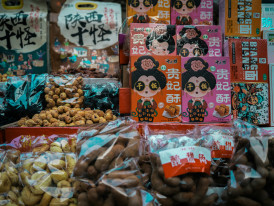
Colorful traditional sweets displayed in market stall Photo by Sergio Kian on Unsplash
Markets and Museums: Culture in Daily Life
Nishiki Market's Living Tradition
Nishiki Market stretches for several blocks through downtown Kyoto, offering everything from seasonal ingredients to handmade sweets. The market has supplied Kyoto's kitchens for over 400 years, adapting to modern needs while maintaining traditional quality.
Colorful traditional sweets displayed in market stall. Filename: nishiki-traditional-sweets.jpg]
Walking through Nishiki market reveals how Japanese culture expresses itself through food. Vendors explain their products with pride, sharing knowledge passed down through generations.

Nijo Castle gardens with autumn foliage and traditional stone lanterns. Photo by Sagawa on Unsplash
Imperial Kyoto: Power and Beauty
Kyoto Imperial Palace's Quiet Grandeur
When you visit Kyoto, you'll see why the Kyoto Imperial Palace served as home to Japan's emperors for over 500 years. The imperial palace complex, surrounded by public park space, offers tours that reveal how political power once shaped daily life in Japan.
The palace gardens demonstrate restraint and sophistication, using space and emptiness as design elements. Even without flowers or dramatic features, these gardens create profound beauty through proportion and materials.
Nijo Castle's Artistic Authority
Nijo Castle is why you would want to make a Kyoto trip, it shows how military power expressed itself through art and architecture. The castle's "nightingale floors" squeak when walked upon, alerting residents to approaching footsteps—a security system built into the building itself.
The castle's gardens change dramatically with seasons, designed to provide year-round beauty. Cherry blossoms frame the buildings in spring, there are green spaces in summer, while autumn brings autumn colors that complement the architecture's earth tones.

A traditional bridge crossing the canal with visitors walking across Photo by Kouji Tsuru on Unsplash
Hidden Gems: The Places Locals Treasure
Moss Temple's Timeless Beauty
Moss Temple (Saihoji) requires advance reservations and involves participating in Buddhist rituals before entering the gardens. This process filters out casual visitors, leaving only those genuinely interested in the experience.
The gardens, covered in over 100 varieties of moss, create an almost prehistoric atmosphere. Time moves differently here, measured in decades rather than seasons.
Secret Spots Along the Philosopher's Path
The Philosopher's Path contains numerous small shrines and hidden temples that most visitors pass without noticing. Taking time to explore these side paths reveals Kyoto's layered history.
Worth Visiting: Local Recommendations
Worth visiting places often lack famous names but provide authentic experiences. Small neighborhood shrines, family-run restaurants, and traditional craft workshops offer glimpses into daily life that hasn't changed fundamentally in generations.
Tip
We match you with the right host, not just any guide.Want to experience the real Kyoto with someone who lives there?
A fully private experience, planned and led by a local host who tailors the day to you
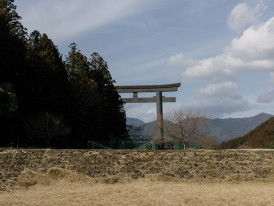
Traditional garden gate opening to reveal distant mountains Photo by Kieran on Unsplash
Planning Your Journey: A Local's Perspective
Understanding What Makes Kyoto Special
What makes Kyoto special isn't any single famous temple or celebrated garden, it's how all these elements work together to create a living museum where traditional culture continues evolving rather than merely surviving.
The city demonstrates how tradition and progress can coexist without one overwhelming the other. Modern Japan expresses itself here through respect for what came before, not rejection of it.
Essential Experiences for Any Kyoto Travel Guide
Any comprehensive Kyoto host will tell you that this city reveals itself gradually. Rush through major sites, and you'll miss the connections between them. Take time to watch how locals interact with these spaces, and you'll understand why they've endured.
The goal isn't to check items off a list, but to enhance your understanding of how beauty, tradition, and daily life intersect in ways that exist nowhere else.
Creating Memories That Last
More Kyoto exists than any single trip can reveal. Tokyo offers modern Japan's energy, Osaka provides contemporary culture, but Kyoto gives you Japan's soul. The city demands time and attention, but rewards both with experiences that change how you see beauty and tradition.
This beautiful place we call home continues teaching me, even after decades of daily walks through its traditional streets. Every season brings new details to notice, new connections to understand.
Whether you plan a three-day intensive exploration or a more relaxed week-long stay, Kyoto will show you exactly what you're ready to see. The key is approaching it with the same respect and attention that has kept its traditions alive for over a thousand years.
This article provides an authentic Japan guide perspective from someone who has lived among these treasures for decades. For more immersive Kyoto experiences, consider extending your stay to truly appreciate the city's rhythm. For additional temple and cultural site information, explore our comprehensive guide to Kyoto attractions.
Ready to plan your perfect day in Kyoto?
Start your experienceWhat if your day in Kyoto was planned by someone who knows it — and you?
City Unscripted matches you with a local host who creates a private experience based on your interests, not a set route.
Want to experience the real Kyoto with someone who lives there?
A fully private experience, planned and led by a local host who tailors the day to you
